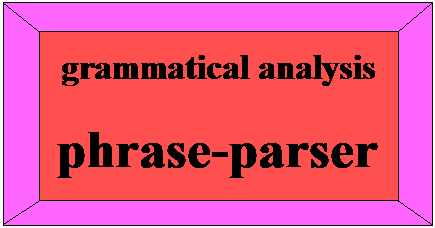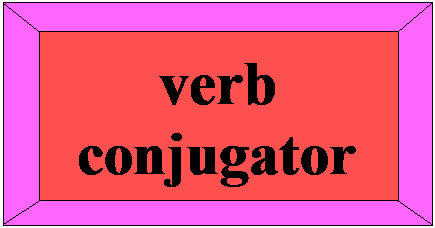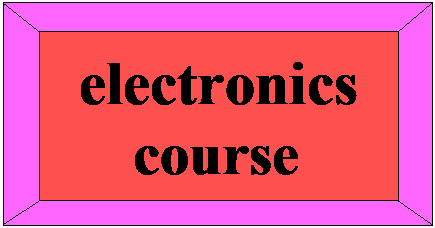|
|
|
Star tensions of the three-phase system |
|
|
|
Star tensions of the three-phase system |
The supply tension of the three-phase system is 400 V in effective value, at frequency f = 50 Hz
The fixed part of the motor is called the
stator, and the part that is can rotate said rotor.On the fixed part of the motor, the stator, there are three
|
|
|
|
These
f =50 Hz
This magnetic field is said
rotating magnetic field
|
|
|
squirrel-cage rotor |
Since the windings on the rotor to do must be in short circuit and must, therefore, bear a high current, must have a high section, for which it is preferred to put the aluminum bars around a core of ferromagnetic material, constituted by laminations of silicon.
In this way the bars of aluminum, closed in short circuit behave as a set of a few turns, each having an elevated section, in order to withstand the high short-circuit currents. These currents are due to the tension that is generated in the bars due to the Faraday's law, since the magnetic field generated by the stator is variable. These currents give rise to another rotating magnetic field generated on the rotor; this magnetic field has the opposite direction to that generated by the stator. Consequently the rotor, as opposed to the magnetic field of the stator is forced to start moving, and then rotate with the same speed of the rotating magnetic field of the stator.The rotor does not rotate at a constant speed, that is the speed of synchronism, but slows down when the load varies;
so the motor is not synchronous but asynchronous said, that does not respect the synchronous speed set by the stator.Indeed, the synchronous speed of the rotating magnetic field of the stator is, in the case of a single polar pair of rotor:
ns = 60 f
where
ns is the number of revolutions per minute, that is the synchronous speed, and f is the frequency.The rotor rotates a speed less than
Consider the difference:
ns - nr
that is the difference between the speed of the rotating magnetic field of the stator and the rotor speed;
us compare now with the synchronous speed, that is the speed that the rotor should have had if it had been in synchronism with the stator; because we want to make the comparison in percentage or relative, we have to put in the denominator of a fraction of the synchronous speed, which was supposed to be the real one of the rotor; we then obtain the following relationship:
where the ratio
s is said slip, signifying that the rotor flows, that is, loses turns with respect to the stator;The
If
s is equal to 0 would mean that the rotor would be in perfect synchronism, that would have the same speed of the rotating magnetic fieldIn fact, if it were
If, however, the slip
s is equal to 1 means that the rotor is stationary.In fact, the rotor is stationary means:
nr = 0

Then slip is equal to 1 when the rotor is stationary, that is at the start.
The
The mechanical characteristic represents the trend of torque T as a function of the rotation speed of the rotor
|
|
| mechanical
characteristic of the |
The mechanical feature can also represent a function of the slip
s; remember that slip s = 1 means the engine stopped; scrolling equal to zero means that the speed is the maximum, then almost equal to that of synchronism.|
|
|
|
This feature tells us that when the engine is running at high speed, that is, close to the synchronous speed
However, when the slpi increases and reaches a value of 1, the motor torque is reduced and the motor slows down;
so we need to prevent the motor functions in the a-b section, which is an unstable trait; in fact, in this section if it increases the mechanical load the motor slows down, that is increases the slip with respect to the synchronous speed, but it also reduces the torque, for which the engine would not be able to increase its speed, but it leads to stop , as the engine torque is reduced.Instead the
0-a is a stable trait; In fact, the higher the load in the stretch 0-a is true that augments the flow, and then the motor slows down, but also increases the torque, for which the asynchronous motor is able to withstand the increased mechanical load.
The speed
The motor speed is not that of synchronism
:ns = 60 f
in the case of engine with one polar pair, the pair is a polar winding disposed on the stator can generate a north pole and a south pole.
Since the rotor never reaches the synchronous speed ns, and in fact it is said asynchronous, the rotor rotates with a speed lower than ns for which the speed of the rotor becomes the following:nr= 60 f (1-s)
where the factor
(1-s) is a factor that reduces the speed of synchronism; in fact, since it s varies from 0 to 1, also the difference:(1-s)
varies from 0 to 1.
The slip in small motors, fully loaded, is around 6%;
while in large motors at full load falls to 2%.
Efficiency
The efficiency h of the
three-phase asynchronous motor we can calculate with the usual formula:
where
h is the efficiency, Pr is the mechanical power used on the rotor, Pa is the electrical power consumption on the stator.The power on the stator is electric and can be measured with the wattmeters;
having the power to the rotor of the mechanical type can be transformed into electrical power if we calculate the losses, that is, the lost power Pp.The power losses are due to both the heating of the windings of the stator and the rotor, by the Joule effect, both the iron loss due to the dispersed magnetic fluxes in the stator and in the rotor, and both the losses due to mechanical friction and to the cooling fans.
If we denote by Pp is the sum of all the losses, then the power output of the rotor will be:Pr = Pa - Pp
that is it will be the difference between the power absorbed on the stator
Pa unless the lost power Pp.Consequently the efficiency becomes:

The efficiency is low for small motors, around 77%, while it is higher for large motors and reaches 94%.
Single-phase asynchronous motor
For small powers are constructed of single-phase asynchronous motors, namely those that use the common tension present in residential buildings between phase and neutral and 240 V and 50 Hz
|
|
|
Single-phase asynchronous motor |
There are two windings;
a first main winding is the one that works to scheme and is not able to generate a rotating magnetic field such as to start the motor; accordingly need a second winding of said starter that has the purpose of starting the motor under load. The starting winding has in series a capacitor, which has the function to phase shift of 90° the current of the starting winding, compared to that of the main winding. In this way, it generates a rotating magnetic field capable of starting the motor. Once started the start winding can be detached by means of a switch which is detached as soon as it reached the speed of the system, due to the centrifugal force.2014
Clarification of a professor of Electronics
 |
 |
 |
Index of all the pages of the site